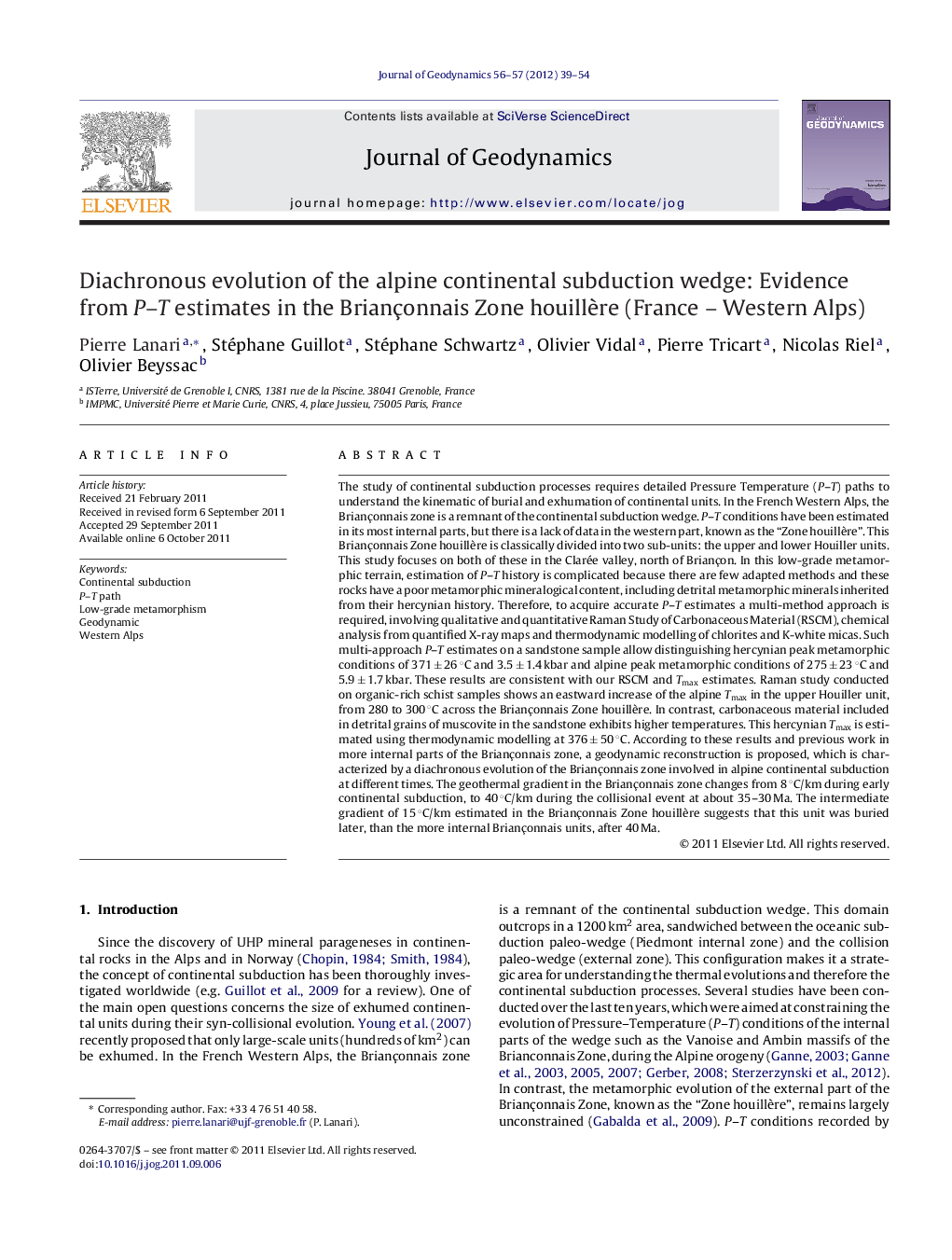| کد مقاله | کد نشریه | سال انتشار | مقاله انگلیسی | نسخه تمام متن |
|---|---|---|---|---|
| 4688366 | 1635791 | 2012 | 16 صفحه PDF | دانلود رایگان |

The study of continental subduction processes requires detailed Pressure Temperature (P–T) paths to understand the kinematic of burial and exhumation of continental units. In the French Western Alps, the Briançonnais zone is a remnant of the continental subduction wedge. P–T conditions have been estimated in its most internal parts, but there is a lack of data in the western part, known as the “Zone houillère”. This Briançonnais Zone houillère is classically divided into two sub-units: the upper and lower Houiller units. This study focuses on both of these in the Clarée valley, north of Briançon. In this low-grade metamorphic terrain, estimation of P–T history is complicated because there are few adapted methods and these rocks have a poor metamorphic mineralogical content, including detrital metamorphic minerals inherited from their hercynian history. Therefore, to acquire accurate P–T estimates a multi-method approach is required, involving qualitative and quantitative Raman Study of Carbonaceous Material (RSCM), chemical analysis from quantified X-ray maps and thermodynamic modelling of chlorites and K-white micas. Such multi-approach P–T estimates on a sandstone sample allow distinguishing hercynian peak metamorphic conditions of 371 ± 26 °C and 3.5 ± 1.4 kbar and alpine peak metamorphic conditions of 275 ± 23 °C and 5.9 ± 1.7 kbar. These results are consistent with our RSCM and Tmax estimates. Raman study conducted on organic-rich schist samples shows an eastward increase of the alpine Tmax in the upper Houiller unit, from 280 to 300 °C across the Briançonnais Zone houillère. In contrast, carbonaceous material included in detrital grains of muscovite in the sandstone exhibits higher temperatures. This hercynian Tmax is estimated using thermodynamic modelling at 376 ± 50 °C. According to these results and previous work in more internal parts of the Briançonnais zone, a geodynamic reconstruction is proposed, which is characterized by a diachronous evolution of the Briançonnais zone involved in alpine continental subduction at different times. The geothermal gradient in the Briançonnais zone changes from 8 °C/km during early continental subduction, to 40 °C/km during the collisional event at about 35–30 Ma. The intermediate gradient of 15 °C/km estimated in the Briançonnais Zone houillère suggests that this unit was buried later, than the more internal Briançonnais units, after 40 Ma.
Journal: Journal of Geodynamics - Volumes 56–57, May 2012, Pages 39–54